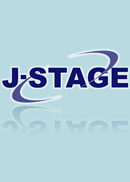27 巻, 2 号
選択された号の論文の6件中1~6を表示しています
- |<
- <
- 1
- >
- >|
原著論文
-
原稿種別: 原著論文
2010 年27 巻2 号 p. 73-76
発行日: 2010年
公開日: 2015/11/05
PDF形式でダウンロード (1686K)
招待講演
-
原稿種別: 招待講演
2010 年27 巻2 号 p. 77-83
発行日: 2010年
公開日: 2015/11/05
PDF形式でダウンロード (1361K) -
原稿種別: 招待講演
2010 年27 巻2 号 p. 85-87
発行日: 2010年
公開日: 2015/11/05
PDF形式でダウンロード (680K)
研究ノート
-
原稿種別: 研究ノート
2010 年27 巻2 号 p. 89-92
発行日: 2010年
公開日: 2015/11/05
PDF形式でダウンロード (362K)
研究情報
-
原稿種別: 研究情報
2010 年27 巻2 号 p. 93-102
発行日: 2010年
公開日: 2015/11/05
PDF形式でダウンロード (1458K)
その他の記事
-
2010 年27 巻2 号 p. C21
発行日: 2010年
公開日: 2015/11/05
PDF形式でダウンロード (965K)
- |<
- <
- 1
- >
- >|
